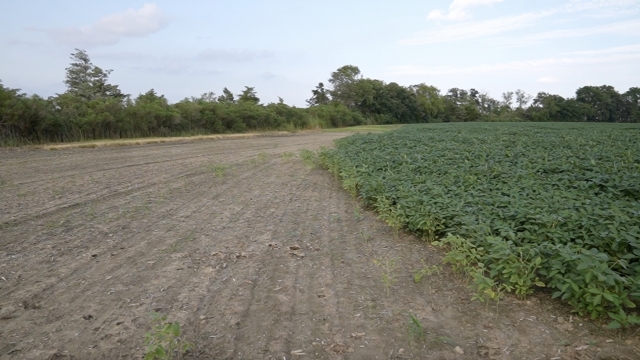For Paul Cartanza, it's best to be prepared. With his work truck at the ready, he has anything he may need, no matter where he goes on his farm.
"I grow corn and soybeans," he told Scripps News. "I grow peas, lima beans, string beans, sweet corn."
Cartanza owns Lazy Day Farms, a sprawling farm in coastal Delaware that started when his dad and uncle bought land there decades ago.
"This is something that I've done since I was 8, 9 years old," Cartanza said. "I love it."
Lately, though, one neighbor is overstepping its bounds.
"Right over these bushes is the bay," Cartanza said. "We're about a half-mile, three-quarters of a mile from the bay."
That's created an issue.
"The water is coming a little bit closer, but we've always had, on high tides, you always get some saltwater intrusion," he said. "It's showing up a little bit more now than it had been."
SEE MORE: Sustainable farming: How technology can optimize food production
Case in point came after he planted soybeans two months ago.
"The saltwater came in, which hurt the soybeans and allowed them to die. You can see the soybean rows that I planted," Cartanza said, as he pointed to a sandy patch of land on his farm. "So, they were planted here — it's just, this year's been a little more difficult with the salt."
Saltwater intrusion — which crops like soybeans and corn are vulnerable to — is a challenge in coastal agriculture areas elsewhere, too, according to a new study published in the Nature Sustainability journal.
"It's really devastating a lot of farmlands along our coastal landscapes," said Pinki Mondal, the study's lead researcher.
Mondal is an assistant professor at the University of Delaware who, along with researchers from the University of Maryland and George Washington University, focused on the Delmarva peninsula — an area that comprises Delaware, Maryland and Virginia.
It's a coastal region with a big agricultural footprint and one whose low elevation makes it particularly susceptible to rising seas.
"We needed a method that we can easily use on a large geographic region," Mondal said. "We utilized satellite data, but we also utilized aerial images captured by USDA — and that's how we could tell where these farms have salt patches."
SEE MORE: Indoor vertical farms take root in cities with empty office space
Those salt patches are visible in photos the researchers shared, which show sandy areas on farms where saltwater intrusion affected the soil and killed off what was growing there.
"This is particularly important because saltwater intrusion is changing landscapes along a lot of places, not just Delmarva," Mondal said. "We have heard of this issue happening in New Jersey, in the Carolinas and even other countries."
In their study, researchers looked at 94,000 location points across 14 coastal counties and found the potential agriculture losses from saltwater intrusion — just in the areas they studied — could be upwards of $107 million per year.
"Honestly, the time for action is now," Mondal said. "We are already behind because, if we are seeing a salt patch on a farm, it's already too late. We have already lost that patch of land."
Back at Lazy Day Farms, Paul Cartanza said he's taken steps to protect his land, by building berms and floodgates.
"The salt does hurt the ground, but the ground can be saved if you can be able to build structures to keep the water out," he said.
He said that adapting to what is happening is the only way to survive.
Trending stories at Scrippsnews.com




